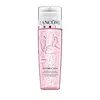What's inside
What's inside
 Key Ingredients
Key Ingredients

No key ingredients
 Benefits
Benefits

 Concerns
Concerns

 Ingredients Side-by-side
Ingredients Side-by-side

Water
Skin ConditioningGlycerin
HumectantDimethicone
EmollientSqualane
EmollientBis-PEG-18 Methyl Ether Dimethyl Silane
EmollientSucrose Stearate
EmollientStearyl Alcohol
EmollientPEG-8 Stearate
EmulsifyingMyristyl Myristate
EmollientPrunus Armeniaca Kernel Oil
MaskingPhenoxyethanol
PreservativePersea Gratissima Oil
Skin ConditioningGlyceryl Stearate
EmollientCetyl Alcohol
EmollientOryza Sativa Bran Oil
EmollientOlea Europaea Fruit Oil
MaskingChlorphenesin
AntimicrobialStearic Acid
CleansingPalmitic Acid
EmollientCarbomer
Emulsion StabilisingAcrylates/C10-30 Alkyl Acrylate Crosspolymer
Emulsion StabilisingTrisodium Ethylenediamine Disuccinate
Prunus Amygdalus Dulcis Oil
Skin ConditioningXanthan Gum
EmulsifyingEthylhexylglycerin
Skin ConditioningSodium Hydroxide
BufferingTocopherol
AntioxidantGlycine Soja Oil
EmollientPseudoalteromonas Ferment Extract
HumectantMyristic Acid
CleansingHydroxypalmitoyl Sphinganine
Skin ConditioningSalicylic Acid
MaskingHelianthus Annuus Seed Oil
EmollientRosmarinus Officinalis Leaf Extract
AntimicrobialCitric Acid
BufferingWater, Glycerin, Dimethicone, Squalane, Bis-PEG-18 Methyl Ether Dimethyl Silane, Sucrose Stearate, Stearyl Alcohol, PEG-8 Stearate, Myristyl Myristate, Prunus Armeniaca Kernel Oil, Phenoxyethanol, Persea Gratissima Oil, Glyceryl Stearate, Cetyl Alcohol, Oryza Sativa Bran Oil, Olea Europaea Fruit Oil, Chlorphenesin, Stearic Acid, Palmitic Acid, Carbomer, Acrylates/C10-30 Alkyl Acrylate Crosspolymer, Trisodium Ethylenediamine Disuccinate, Prunus Amygdalus Dulcis Oil, Xanthan Gum, Ethylhexylglycerin, Sodium Hydroxide, Tocopherol, Glycine Soja Oil, Pseudoalteromonas Ferment Extract, Myristic Acid, Hydroxypalmitoyl Sphinganine, Salicylic Acid, Helianthus Annuus Seed Oil, Rosmarinus Officinalis Leaf Extract, Citric Acid
Water
Skin ConditioningPropylene Glycol
HumectantGlycerin
HumectantAlcohol Denat.
AntimicrobialButylene Glycol
HumectantPEG-20
HumectantPEG-8
HumectantBis-PEG-18 Methyl Ether Dimethyl Silane
EmollientPhenoxyethanol
PreservativePEG-60 Hydrogenated Castor Oil
EmulsifyingEthylhexylglycerin
Skin ConditioningCarbomer
Emulsion StabilisingPotassium Hydroxide
BufferingOphiopogon Japonicus Root Extract
Skin ConditioningRosa Gallica Flower Extract
AstringentJasminum Officinale Extract
MaskingPaeonia Suffruticosa Extract
Skin ConditioningTheobroma Cacao Extract
Skin ConditioningMoringa Oleifera Seed Extract
Skin ConditioningAlteromonas Ferment Extract
Skin ConditioningParfum
MaskingWater, Propylene Glycol, Glycerin, Alcohol Denat., Butylene Glycol, PEG-20, PEG-8, Bis-PEG-18 Methyl Ether Dimethyl Silane, Phenoxyethanol, PEG-60 Hydrogenated Castor Oil, Ethylhexylglycerin, Carbomer, Potassium Hydroxide, Ophiopogon Japonicus Root Extract, Rosa Gallica Flower Extract, Jasminum Officinale Extract, Paeonia Suffruticosa Extract, Theobroma Cacao Extract, Moringa Oleifera Seed Extract, Alteromonas Ferment Extract, Parfum
 Reviews
Reviews

Ingredients Explained
These ingredients are found in both products.
Ingredients higher up in an ingredient list are typically present in a larger amount.
Bis-Peg-18 Methyl Ether Dimethyl Silane belongs to the siloxanes and silicones classes. It is synthetically created and has a waxy composition.
This ingredient is a humectant and emollient, meaning it helps hydrate the skin. Humectants draw moisture to your skin, while emollients prevent moisture from escaping.
Carbomer is a polymer of acrylic acid. Its main role is to create a gel consistency.
A high amount of carbomer can cause pilling or balling up of products. Don't worry, most products contain 1% or less of carbomer.
Ethylhexylglycerin (we can't pronounce this either) is commonly used as a preservative and skin softener. It is derived from glyceryl.
You might see Ethylhexylglycerin often paired with other preservatives such as phenoxyethanol. Ethylhexylglycerin has been found to increase the effectiveness of these other preservatives.
Glycerin is already naturally found in your skin. It helps moisturize and protect your skin.
A study from 2016 found glycerin to be more effective as a humectant than AHAs and hyaluronic acid.
As a humectant, it helps the skin stay hydrated by pulling moisture to your skin. The low molecular weight of glycerin allows it to pull moisture into the deeper layers of your skin.
Hydrated skin improves your skin barrier; Your skin barrier helps protect against irritants and bacteria.
Glycerin has also been found to have antimicrobial and antiviral properties. Due to these properties, glycerin is often used in wound and burn treatments.
In cosmetics, glycerin is usually derived from plants such as soybean or palm. However, it can also be sourced from animals, such as tallow or animal fat.
This ingredient is organic, colorless, odorless, and non-toxic.
Glycerin is the name for this ingredient in American English. British English uses Glycerol/Glycerine.
Learn more about GlycerinPhenoxyethanol is a preservative that has germicide, antimicrobial, and aromatic properties. Studies show that phenoxyethanol can prevent microbial growth. By itself, it has a scent that is similar to that of a rose.
It's often used in formulations along with Caprylyl Glycol to preserve the shelf life of products.
Water. It's the most common cosmetic ingredient of all. You'll usually see it at the top of ingredient lists, meaning that it makes up the largest part of the product.
So why is it so popular? Water most often acts as a solvent - this means that it helps dissolve other ingredients into the formulation.
You'll also recognize water as that liquid we all need to stay alive. If you see this, drink a glass of water. Stay hydrated!
Learn more about Water